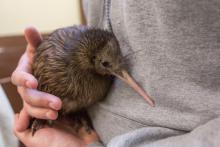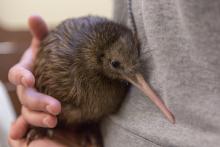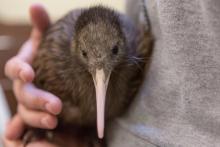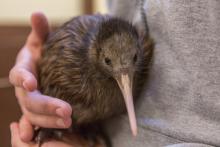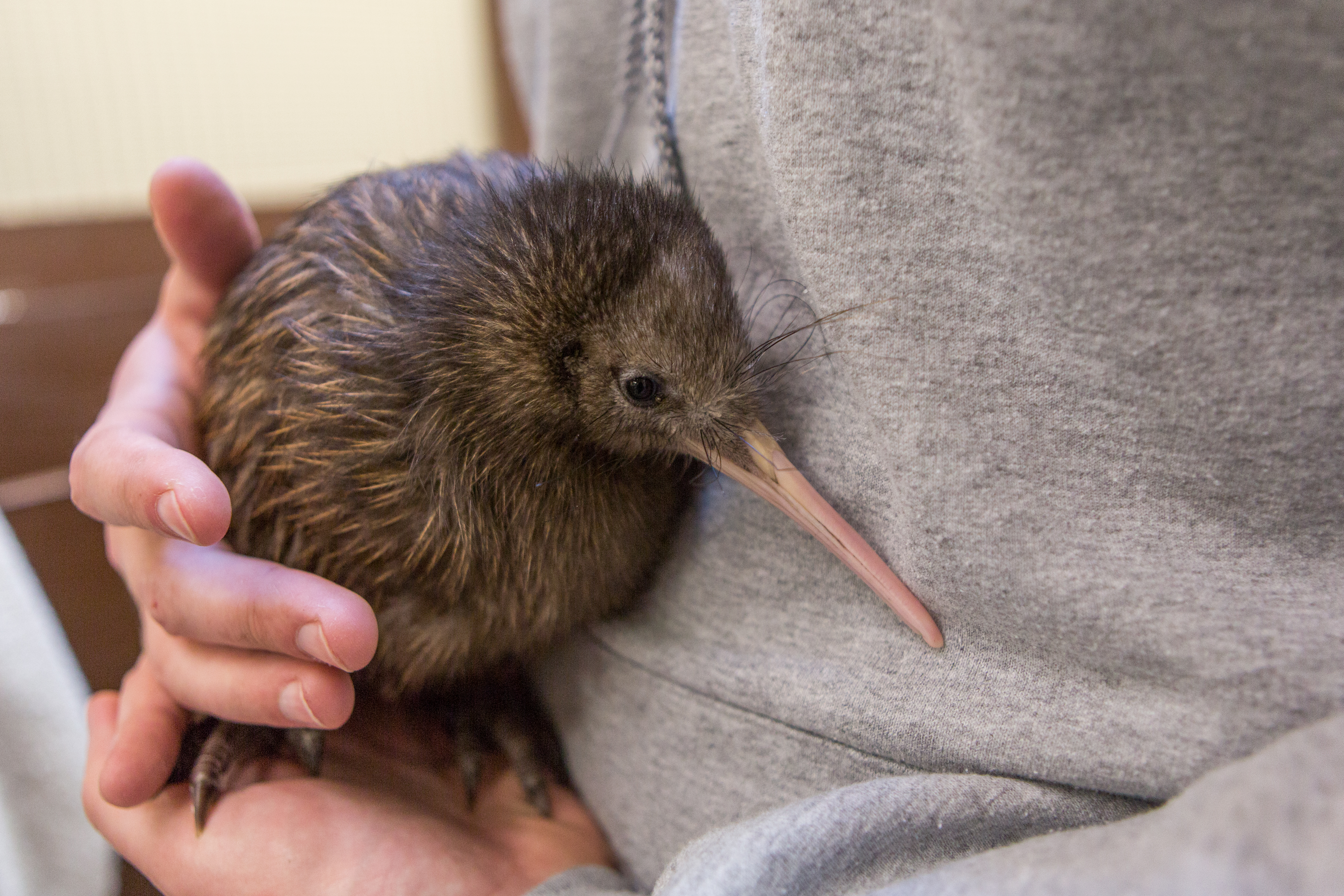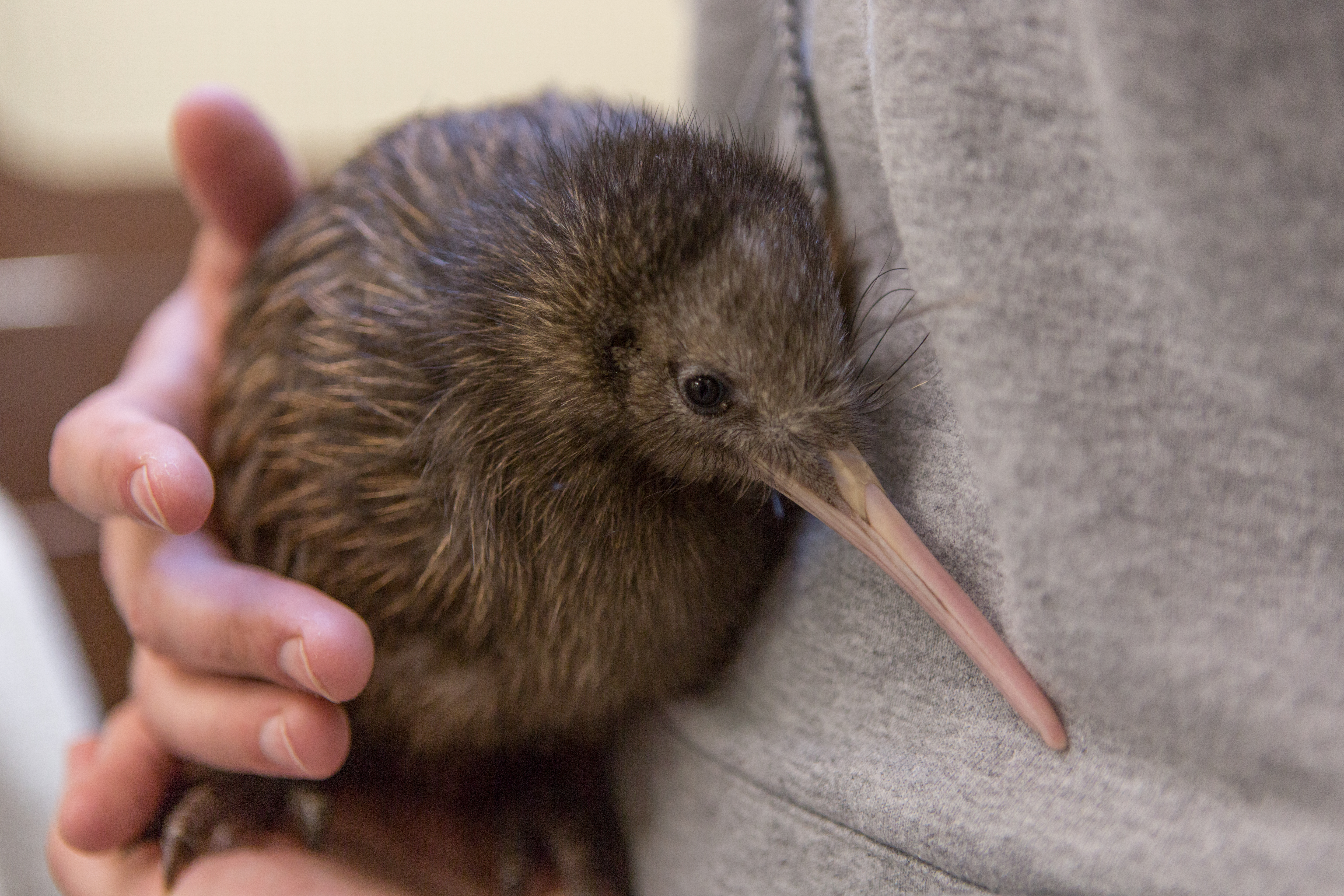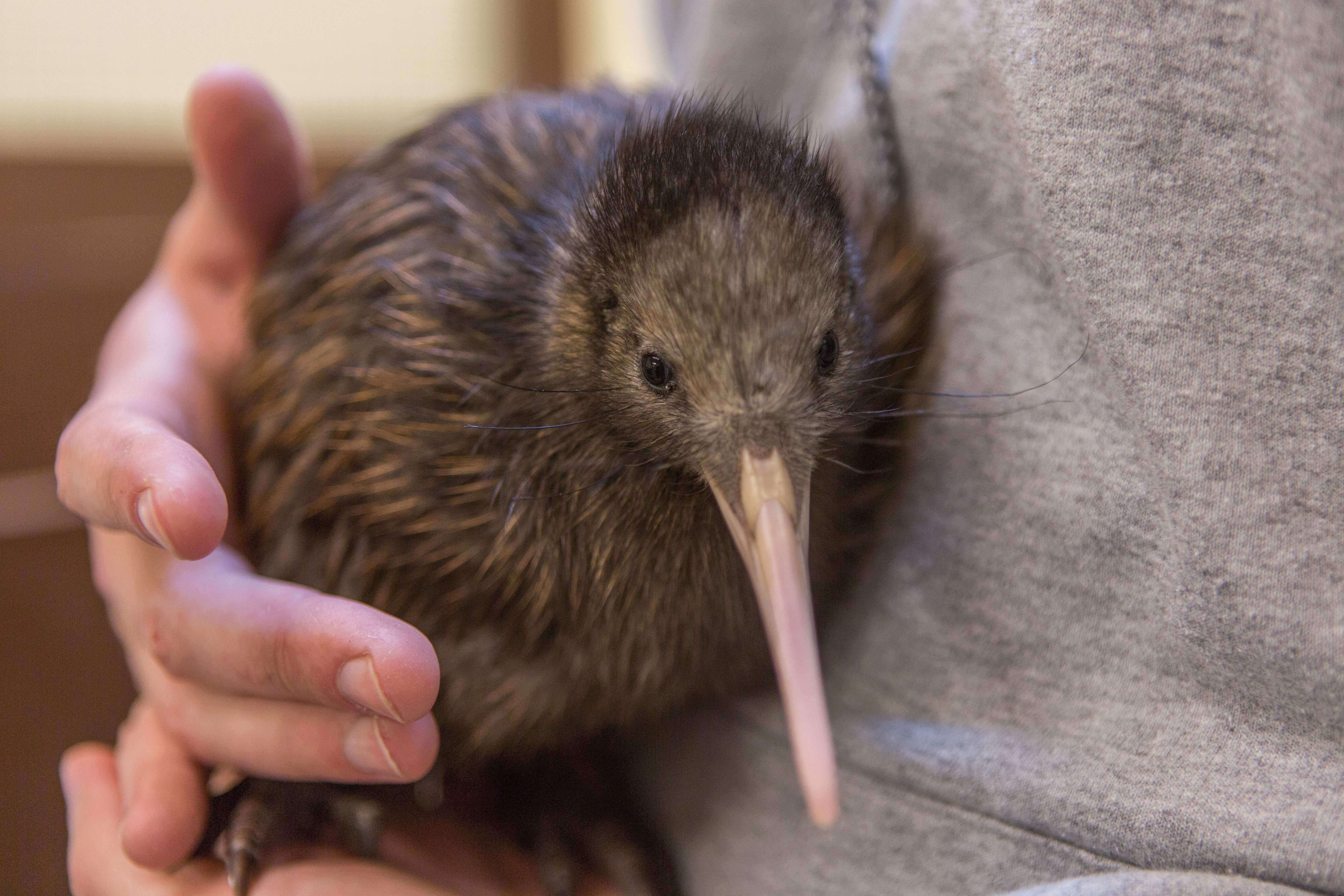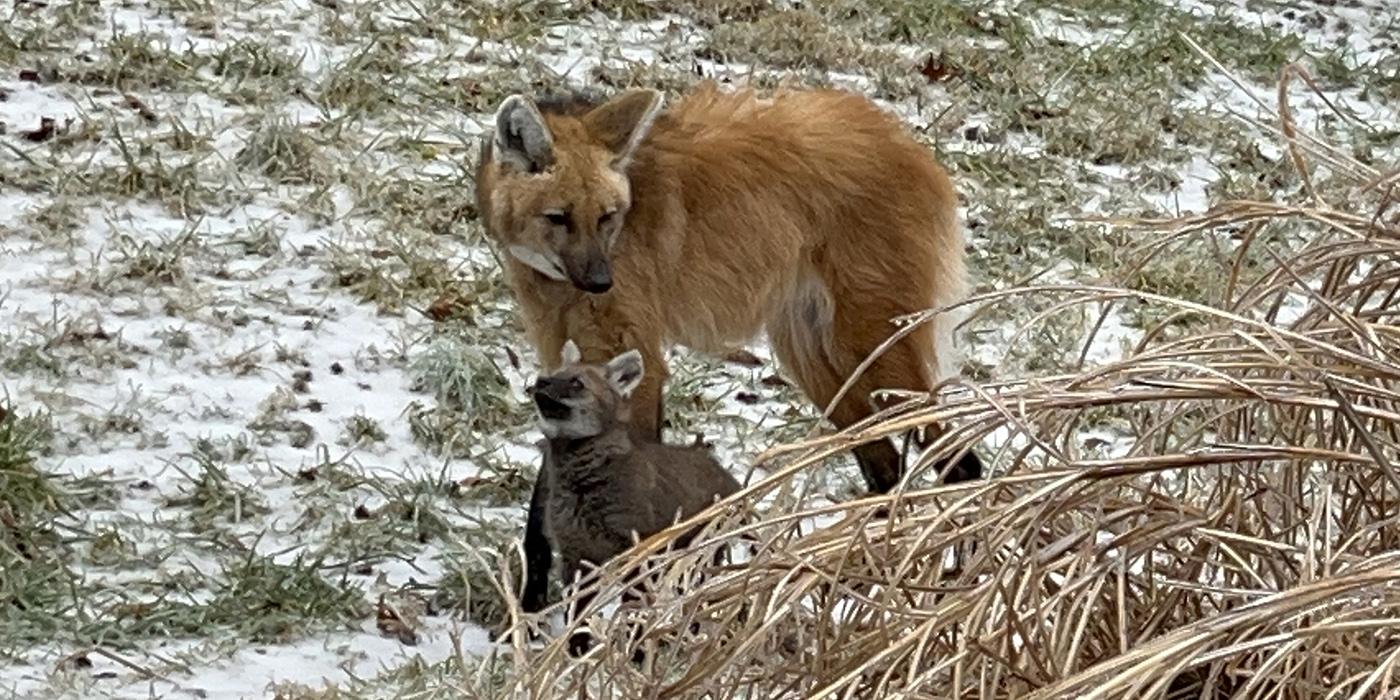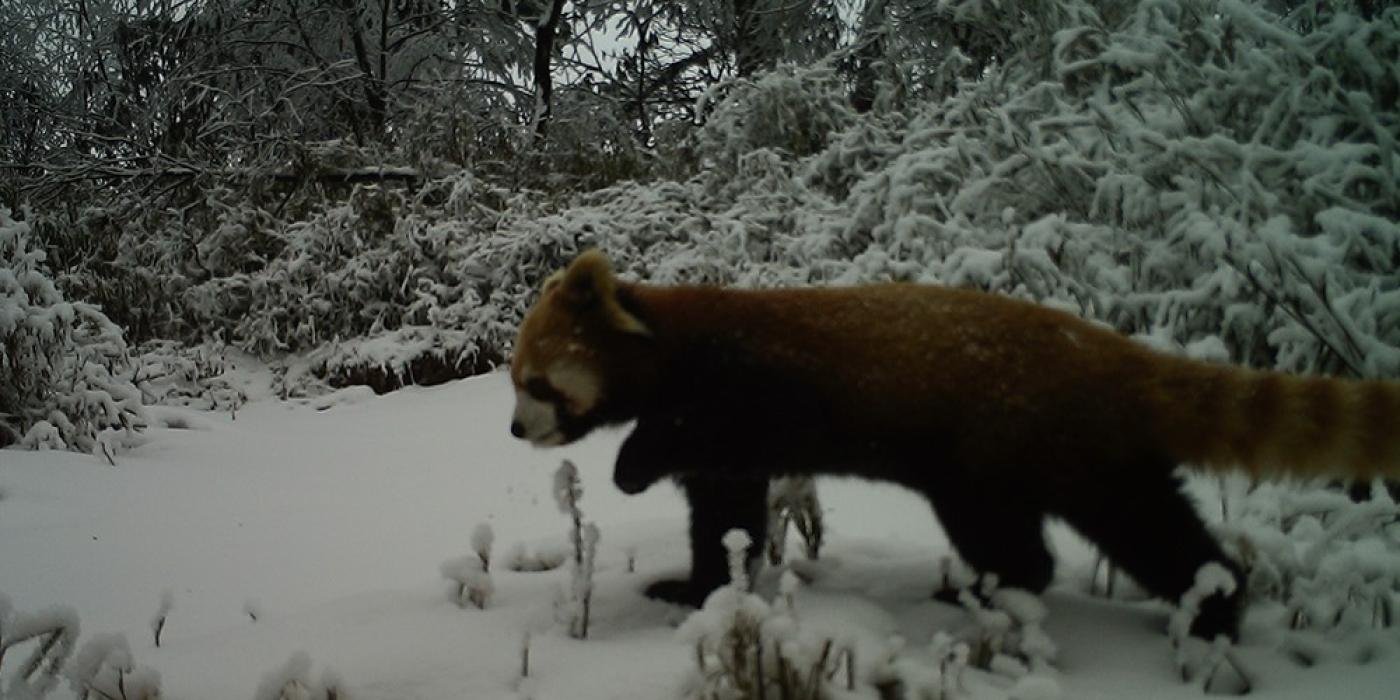Smithsonian Conservation Biology Institute Seeking Names for Kiwi Chick
A Public Vote Will Decide the Kiwi’s Name
The Smithsonian Conservation Biology Institute in Front Royal, Virginia, and the Embassy of New Zealand in the United States are asking animal lovers to help name an endangered female brown kiwi chick. Members of the public can submit name suggestions via the Smithsonian’s National Zoo and Conservation Biology Institute’s website until Nov. 5 at 11 p.m. EST. The top suggestions will be put up for a worldwide public vote via the Zoo’s Twitter account (@NationalZoo) Nov. 13.
Keepers describe the chick as fairly calm and laid-back, though she could become more cautious as she matures. She readily eats all of her food, but mealworms appear to be her favorite food. In the past three months, she has tripled her weight and now weighs about 2 pounds (908 grams), which is normal for a young kiwi. Since kiwi are nocturnal, she spends most of her day sleeping and only interacts with keepers during routine health checks and weigh-ins.
The chick hatched at SCBI earlier this summer between July 29 and July 30. She is the fifth chick for her parents Ngati Hine Tahi and Ngati Hine Rua and their first female offspring. Ngati Hine Tahi and Ngati Hine Rua were both gifts from New Zealand in 2010. Their three older male offspring who hatched at SCBI in 2016 are named Kaha, Hari and Kake. Kaha was named by New Zealand’s Ambassador to the United States Tim Groser and translates as “strong” from Maori. Hari translates as “joy” and Kake translates as “to overcome.” Kiwi are sacred to the Maori people in New Zealand. SCBI repatriates feathers molted from its kiwi to New Zealand.
SCBI’s kiwi participate in the Association of Zoos and Aquariums’ Species Survival Plan (SSP) for brown kiwi. The chicks born there enter a breeding program when they are fully mature. The SSP makes breeding recommendations to match the birds with mates that will increase the genetic diversity of the population living in human care. Brown kiwi are monogamous and usually mate for life. Kathy Brader, bird keeper at the Smithsonian’s National Zoo, serves as the SSP coordinator for brown kiwi living outside of New Zealand.
Brown kiwis, flightless nocturnal birds, are native to New Zealand and are endangered due to non-native predators introduced by humans. They lay the second-largest eggs for body size of any bird—an average 20 percent of the female’s body weight. In 1975, the Zoo became the first facility to hatch a brown kiwi outside of New Zealand. SCBI has hatched six kiwi eggs since 2012.
SCBI plays a leading role in the Smithsonian’s global efforts to save wildlife species from extinction and train future generations of conservationists. SCBI spearheads research programs at its headquarters in Front Royal, Va., the Smithsonian’s National Zoo in Washington, D.C., and at field research stations and training sites worldwide. SCBI scientists tackle some of today’s most complex conservation challenges by applying and sharing what they learn about animal behavior and reproduction, ecology, genetics, migration and conservation sustainability.
###
Photo/Video Credit: Roshan Patel, Smithsonian Conservation Biology Institute
Related Species:
Image Gallery
